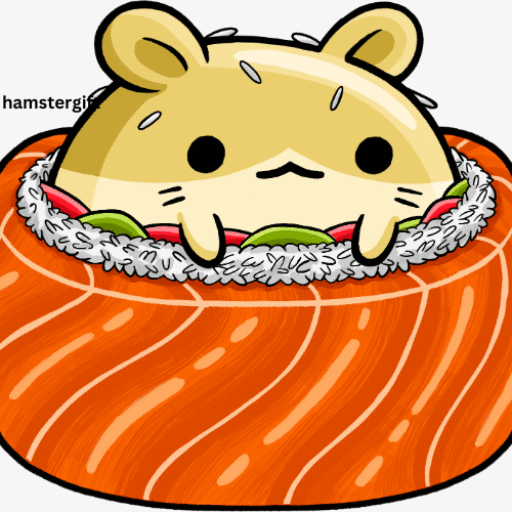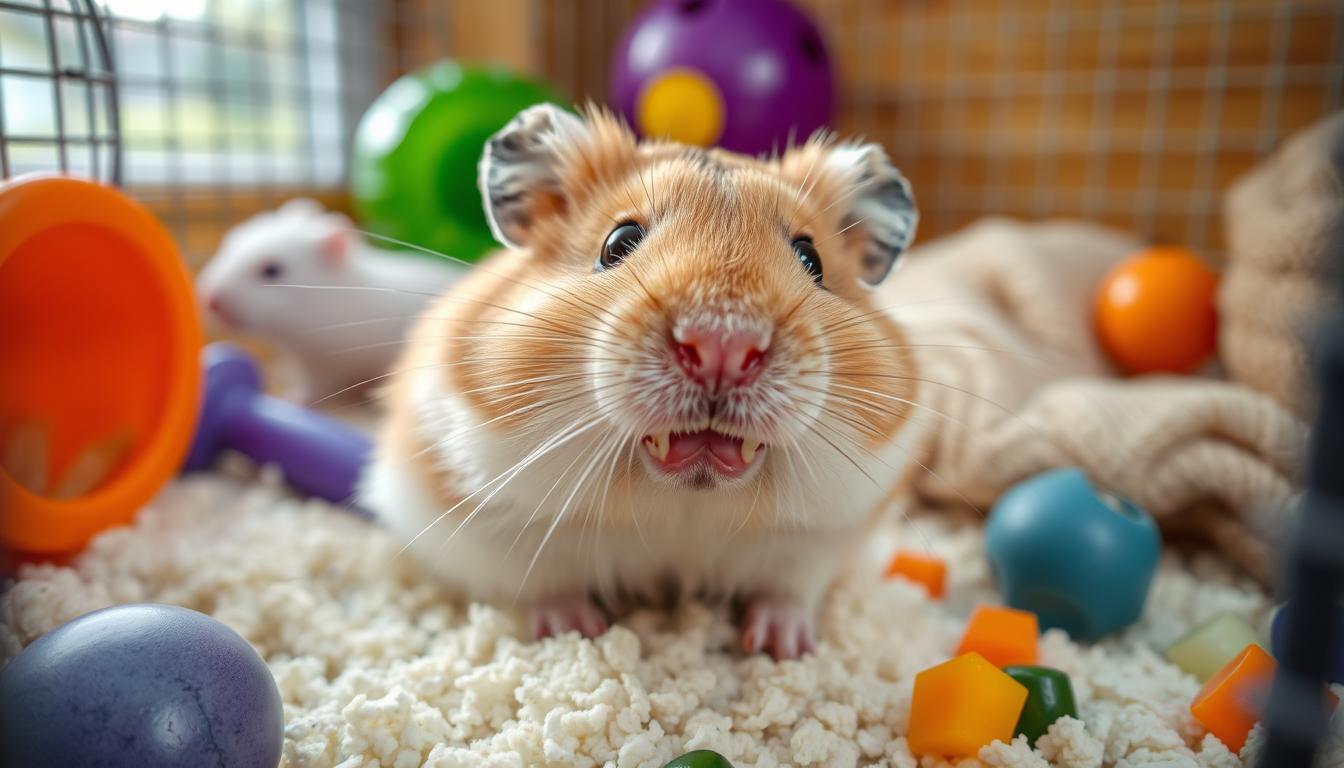Hamsters, those adorable balls of fluff, are masters of cuteness. But have you ever really watched a hamster yawn? It’s a fleeting moment of pure, unadulterated adorableness, a miniature drama played out on the smallest of stages. More than just a sign of sleepiness, a hamster yawn is a fascinating glimpse into their tiny, busy lives. This article will delve into the details of a hamster yawn, exploring the physical transformations and subtle behaviors that accompany this irresistible action. Get ready to witness the magic – and maybe even feel a yawn coming on yourself!
Tiny Jaws Open Wide: Hamster Yawns Begin!
The first sign of a hamster yawn is usually a subtle widening of the mouth. It’s not the dramatic, gaping yawn of a human, but more of a gradual opening, a preparation for the main event. Their tiny jaws, normally busy with chewing and storing food, begin to unhinge, revealing a glimpse of the pink interior. This initial stretch might be accompanied by a slight tilting of the head, as if they’re trying to get a better angle for the coming yawn.
The widening of the jaw is often a slow process, building anticipation for the full yawn. It’s like watching a tiny door creak open, revealing the secrets within. You might even notice a slight twitching of their nose as they prepare for the influx of air. This pre-yawn stage is crucial, setting the stage for the adorable spectacle that’s about to unfold.
The opening of the jaws isn’t just a physical action; it’s also a sign of vulnerability. Hamsters are naturally cautious creatures, and exposing their mouth, even for a brief moment, can be a risk. This makes the act of yawning all the more endearing, as they momentarily let their guard down and succumb to the irresistible urge.
Sometimes, the yawn might be interrupted before it even fully begins. A sudden noise or movement can startle them, causing them to quickly snap their jaws shut. This only adds to the fleeting nature of the hamster yawn, making it all the more precious when you actually catch it.
Think of it as a tiny, silent prelude to a grand performance. The opening of the jaws is the curtain rising, signaling the start of something special. It’s a subtle yet significant movement that sets the stage for the full, adorable glory of the hamster yawn.
This initial opening is also a good time to observe their teeth! Hamsters have impressive incisors that are constantly growing, and this is a good way to check on their dental health. A healthy hamster will have even, clean teeth.
A Miniature Hippo? The Cheek Pouch Stretch
One of the most distinctive features of a hamster yawn is the accompanying stretch of their cheek pouches. These pouches, normally filled with food treasures, become even more prominent as they yawn, expanding to accommodate the movement of their jaws. It’s almost like they’re transforming into miniature hippos, with their cheeks puffing out to comical proportions.
The degree of cheek pouch stretch can vary depending on the hamster and the intensity of the yawn. Some hamsters might only experience a slight puffiness, while others will have their cheeks bulging outwards, giving them a truly hilarious appearance. This stretch is a direct result of the jaw movement, as the muscles around the mouth and cheeks contract and expand.
The cheek pouches are incredibly elastic, allowing them to stretch significantly without causing discomfort. This is essential for their foraging behavior, as they often need to carry large amounts of food back to their burrows. The yawning stretch is just another testament to the amazing adaptability of these pouches.
It’s important to note that a constantly bulging cheek pouch, unrelated to yawning, could be a sign of a problem. If you notice that your hamster’s cheek pouch is always full, even when they’re not eating, it’s best to consult a veterinarian, as it could indicate an impaction or other health issue.
However, during a yawn, the cheek pouch stretch is perfectly normal and adds to the overall cuteness of the moment. It’s a visual reminder of their unique anatomy and their ability to store food in those amazing pouches.
This cheek pouch stretch is also a great opportunity to check on the health of their pouches. Make sure there are no signs of injury or infection. A healthy pouch will be clean and free of any redness or swelling.
Pink Tongues & Tiny Teeth: Yawning Hamster Alert!
As the yawn reaches its peak, you’ll get a clear view of the inside of your hamster’s mouth. This is when their tiny pink tongue becomes visible, often curled slightly at the tip. Their teeth, usually hidden behind their lips, are also on full display, showcasing their impressive gnawing power.
The pinkness of their tongue is a sign of good health, indicating proper blood circulation. A pale or discolored tongue could be a cause for concern and should be checked by a veterinarian. During a yawn, the tongue might also move slightly, as they adjust their mouth position.
Their teeth, especially their incisors, are constantly growing and need to be worn down by chewing. The yawning moment provides a glimpse of these essential tools, allowing you to check for any signs of overgrowth or misalignment.
The combination of the pink tongue and tiny teeth creates a charming contrast, highlighting the delicate yet functional nature of their mouth. It’s a reminder that even in a moment of relaxation, their bodies are still working hard to maintain their health and well-being.
Sometimes, you might even see a tiny bit of saliva as they yawn. This is perfectly normal and helps to lubricate their mouth and throat. It’s just another small detail that adds to the realism of the hamster yawn experience.
Take this opportunity to observe the overall cleanliness of their mouth. Food debris can sometimes get stuck in their teeth, so it’s good to keep an eye out for any potential problems.
The "O" Face: When a Hamster Gets Sleepy
The peak of a hamster yawn is often characterized by a distinct "O" shape of their mouth. As their jaws open wide, their lips form a perfect circle, creating a comical and endearing expression. It’s as if they’re silently exclaiming their sleepiness to the world.
This "O" face is a result of the muscles around their mouth stretching to their maximum extent. It’s a sign that they’re fully committed to the yawn, letting out all their pent-up tension and preparing for a nap. The shape is often symmetrical, adding to the overall aesthetic appeal of the moment.
The "O" face isn’t just about aesthetics; it also serves a practical purpose. The wide opening allows for maximum airflow, helping to relieve any pressure or discomfort in their respiratory system. It’s a natural and instinctive response to sleepiness.
The intensity of the "O" face can vary depending on the individual hamster. Some hamsters might have a more pronounced "O" than others, while others might have a slightly more oval-shaped opening. This is simply a matter of individual variation and doesn’t necessarily indicate anything about their health or well-being.
It’s important to remember that the "O" face is a fleeting moment, lasting only a fraction of a second. This makes it all the more precious and rewarding when you manage to catch it on camera or simply observe it with your own eyes.
This "O" shape is reminiscent of a tiny, silent roar. It’s a cute and harmless display of their internal state, a visual representation of their need for rest and relaxation.
Whiskers Akimbo: A Funny Yawning Pose
The whiskers, those sensitive sensory organs that help hamsters navigate their surroundings, often take on a comical pose during a yawn. As their mouth opens wide, their whiskers tend to splay outwards, sticking out at odd angles, almost like they’re trying to balance themselves.
This "whiskers akimbo" effect is a result of the muscle movements around their face. As their jaws stretch, the muscles that control their whiskers are also affected, causing them to move and shift. The resulting pose can be quite amusing, adding to the overall charm of the yawning hamster.
The direction and angle of the whiskers can vary depending on the individual hamster and the intensity of the yawn. Some might have their whiskers pointing straight outwards, while others might have them curved upwards or downwards. This variation only adds to the uniqueness of each yawn.
The whiskers’ reaction during a yawn is a testament to their sensitivity. Even the slightest movement of their facial muscles can cause them to twitch and shift, highlighting their importance in their sensory perception.
It’s also worth noting that the whiskers’ color and length can vary depending on the breed of hamster. Some hamsters have long, black whiskers, while others have short, white ones. This variation adds to the diversity of the "whiskers akimbo" effect.
The sight of a hamster with its whiskers splayed out during a yawn is a guaranteed mood booster. It’s a reminder of their quirky and endearing nature, a small detail that makes them all the more lovable.
Little Paws Clench: The Full Body Yawn Feel
While the focus is often on the face during a hamster yawn, the rest of their body can also be involved. You might notice their tiny paws clenching slightly, as if they’re trying to get a better grip on their surroundings. This is a subtle but significant sign of the full-body experience of a yawn.
The paw clenching is likely a subconscious reaction, a way for them to brace themselves during the stretch. It’s similar to how humans sometimes clench their fists or toes when they yawn, a way to engage their muscles and maximize the feeling of release.
The intensity of the paw clenching


